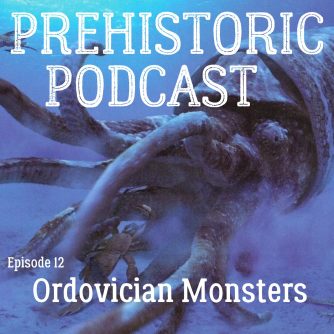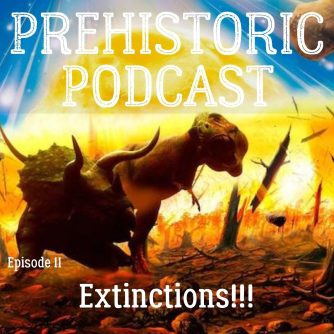Cambrian notes: raw
Cambrian explosion, the unparalleled emergence of organisms between 541 million and approximately 530 million years ago at the beginning of the Cambrian Period.
The Cambrian Period marks an important point in the history of life on Earth; it is the time when most of the major groups of animals first appear in the fossil record.
up to 35 phylums
http://youtube.com/watch?v=qNtQwUO9ff8
The most accepted hypothesis on why this occurred is increase in an oxygen levels due to a huge rise in phytoplankton in the oceans. microscopic marine algae
One of the main explanations is that a series of ice ages and thaws created big glacier thaws which eroded rock into the ocean pouring nutrients into the ocean creating an algae rich environment which caused the production of a lot of oxygen.
Oxygen was a necessary ingredient for more complex forms of life to evolve.
This erosion of minerals also allowed animals to develop shells and exoskeletons due to an increase in minerals such as calcium
This lead to the emergence of the first predators.
Predators are a huge driver of evolution. Natural selection is the driving force for evolution, and without predators the selection pressures were much less because the requirements for fitness in the environment are just purely about using available resources and surviving being eaten. Once you had mobile predators, the prey needed to be mobile to survive.
The Cambrian ended 488M years ago in the Cambrian-Ordovician mass extinction event… There are a few theories as to why this happened, but the two main theories are around ice ages and cool water leading to reduction of habit and/or reduction of oxygen levels in the ocean. There is evidence of glaciers sediment in the ordovician layers
Punctuated evolution
10 tamiscolaris
Length: 3 feet from head to tail
Diet
Fun Facts
Would wave it’s tentacles to capture particles in the ocean into it’s mouth. Similar to a modern filter feeder but a different technique. It’s feeding appendages were attached to a head shield
Instead of claws on it’s legs it had baleen like whales for filter feeding. Raked seawater for tiny prehistoric krill or things similar to that. Modern whales also evolved from meat eating predators
Whenever we see filter feeders that are gentle giants they always come from apex predators… they evolve this strategy to take advantage of abundant food sources
It had huge eyes on stalks and a moth shaped like a round moth like a anomalocaris
Considered an ancient type of shrimp, may have evolved into a filter feeder from a predator like some modern sharks. It evolved to take advantage of abundant new foods in the ecosystem
1 opabinia oh-pov-i-ne-ah
Length: 7 cm long (finger length)
Diet: Ate early fish and other arthropods
Fun Facts:
Strangest of all animals! Features not seen in any modern animals
Long elephant like trunk with a claw a the end
It had 5 light sensing primitive eyes. It used the eyes for evading anomalocaris and really for finding food
It had strange fins running down the length of its body
It’s claw was used to dig in the dirt and dig out prey
One of its eyes is on the top of it’s head pointing straight up
it’s possible it was a scuttler
it possibly could have swam around like anomalocaris
2 anomalocaris uh-nom-all-oh-car-us
a
3 feet long .,. largest creature of the cambrian period
Was the top predator
Length:
Diet
Fun Facts
it’s mouth looked like a donut and had sharp fangs.
Arms look rams horns with a bunch of spikes on them
Big light sensing bug eyes
Would grab a trilobite w/ its tentacles and flip them over
Took about 100 years to figure out how it looked and find the right fossil evidence
It’s teeth would open up and then close to squeeze prey.. a very unique biting style..looked like a metal vegetable steamer basket you put in a pot.
It would swim by undulating it’s winglike flaps..
it could swim in both directions.. both forward and back
It flourished for 20 million years which is 100 times longer than humans have lived
3 hallucigenia hal-lu-si-gay-ne-ah
Length: 1 centimeter to a maximum of 5 centimeters
Diet: Detrivore – an animal which feeds on dead organic material
Fun Facts
The paper that described it says its name refers to the “Bizzare and dream like appearance of the animal”
It is a spiny worm. It has pairs of spines on top and appendages on the bottom
Originally it was described upside down
It has a pair of eyes and sort of a smiley face.. looks sort of like caterpillar with loads of spiky sticks popping off of it
One one end it had a round mouth will sharp teeth in it
4 haikouichthys hy-co-ick-thees
Was the first fish
Length: 2.5 CM
Diet:
Fun Facts
One of the earliest vertebrates and earliest fish fossils found.. when they found it they believed fish evolved over 50 million years later than that fossil.
The earliest ancestor of modern man!
It had around 6 to 9 gills. It had a dorsal fin that ran the length of it’s body.. and probably swam by undulating its body side to side.
in walking with monsters he was taking bites off of anomalocaris
5 marrella – Mar-rel-lah
Was a weird trilobite
bottom feeder
Length: 2 centimeters
Diet; Detritivore
Fun Facts
its stomach was in its head!
it had a triangular dorsal heart with arteries branching from it
It had 2 sets of antenna
the most common type of animal found in fossil form. It was thought to be a trilobite but it’s actually now classified as a stem arthropod
24 ti 26 body segments..
It’s upper legs had gills which absorbed oxygen
They could have had an iridescent sheen
6 wiwaxia
Length: thumbnail size
Diet: bottom feeder
Fun Facts
Soft bodied animals.. looks like a spiny spikey pineapple
It’s a stem mollusc
it evolved spikes because of the emergence of predators
had a mouth that it used to get microbes off the sea floors
it had armored plates all over it except it’s underside where it’s mouth was
7 habelia optata
Ancestor of spiders scorpions horseshoe craps
Length: 2 cm
Diet
Fun Facts
an arthropod
ancestor of the modern spiders and crabs
it’s tail was as long as the rest of it’s body
5 pairs of legs.. basically a tiny crab/spider type of thing.. or an early sea scorpion
it has appendages in it’s mouth called chelicerae which it can use to cut up food
8 canadaspis
Length: about 1 centimeter
Diet bottom feeder
Fun Facts
found over 4500 specimens
it looks like a bean.. it had eyes and lots of spikes and legs coming out of the bottom
pushed its appendages through the sediment to feed
9 waptia
Length: 8 centimeters
Diet: bottom feeder
Fun Fact
An ancient type of arthropo
It was an active swimme
thousands of fossil specimens have been collect
looks sort of like a proto crab but currently classified as a stem crustacean
sifted through the ocean floor..





